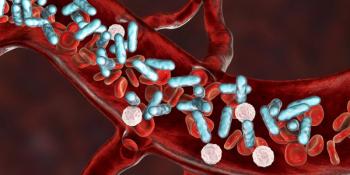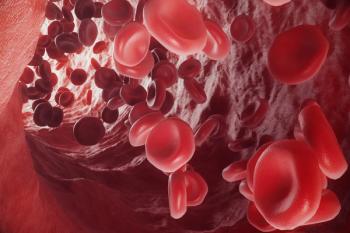
MRD Has Potential to Predict Outcomes for Patients With Myeloma Post-Stem Cell Transplantation
Minimal residual disease negativity may predict outcomes for patients with multiple myeloma on maintenance therapy with lenalidomide who previously underwent autologous stem cell transplantation.
Minimal residual disease (MRD) negativity may predict outcomes for patients with multiple myeloma on maintenance therapy with lenalidomide (Revlimid) who previously underwent autologous stem cell transplantation, according to results from the Myeloma XI trial presented at the 18th International Myeloma Workshop.
“Results support the role of MRD monitoring in assessment of the efficacy of different maintenance/consolidation strategies within clinical trials,” said Ruth de Tute, consultant clinical scientist lead at the Haematological Malignancy Diagnostic Service (HMDS) of St. James Hospital in Leeds, UK.
The phase 3 Myeloma XI trial, “which is the biggest UK myeloma trial to date,” de Tute said, included 1248 patients with myeloma who were eligible for autologous stem cell transplant. After undergoing transplant, patients were randomly assigned either maintenance therapy with (n = 730) or without lenalidomide (n = 518). MRD status was assessed at 3 months after autologous stem cell transplant and 6 months after randomization.
Through this, researchers assessed the potential link between MRD status and both progression-free survival and overall survival. Progression-free survival was defined as the time from either 3 months or 9 months post-transplant to the date of disease progression or all-cause death. Overall survival was defined as the time from either 3 months or 9 months post-transplant to the date of all-cause death.
Of the 750 patients with evaluable samples after autologous stem cell transplantation, 63.3% were MRD-negative. In addition, of the 623 patients with evaluable samples 9 months after transplantation, 65.6% had a negative MRD status.
During a median follow-up of 32.9 months, patients with a positive MRD status had a progression-free survival of 24 months (95% CI, 21-28) compared with 44 months for those with a negative status (HR, 0.47; 95% CI, 0.37-0.58; P < .0001). Median overall survival was not reached in either group at the time of the analysis, de Tute said, although at 3 years, it was 78.7% in patients with a positive status to 86.5% in patients with a negative status, leading to a statistically significant difference favoring those with a negative MRD status (HR, 0.59; 95% CI, 0.4-0.85).
Three months after transplantation, compared with patients assigned observation, patients assigned maintenance therapy with lenalidomide had significant improvements in progression-free survival in both the MRD-positive (33 months vs. 18 months; HR, 0.43) and MRD-negative groups (56 months vs. 36 months; HR, 0.62). A similar effect was observed when assessing overall survival, although the median overall survival has not been reached in either group.
When MRD status was assessed 9 months after randomization, patients with a negative status had a significantly longer median progression-free survival compared with those with a positive status (50 months vs. 13 months; HR, 0.2; 95% CI, 0.13-0.31; P < .0001). Median overall survival was also not reached in both of these groups at this time point, although the difference between the groups was statistically significant (HR, 0.33; 95% CI, 0.15-0.75; P = .0077).
Patients assigned lenalidomide, compared with observation, continued to have significant improvements in progression-free survival 9 months after randomization in the MRD-positive (47 months vs. 9 months) and MRD-negative groups (NE vs. 31 months).
The impact of sustained MRD-negative status was assessed in 245 patients. In this analysis, all patients with MRD-negative status 9 months after randomization had equally good outcomes regardless of MRD status at 3 months after transplant. Patients who continued to have an MRD-positive status throughout and those who had a reemergence of disease after originally having a negative status 3 months after transplant had similar outcomes.
Researchers also assessed the impact of MRD status by molecular risk subgroups.
“MRD negativity was predictive of improved progression-free survival in patients with standard risk and high risk or ultra-high-risk disease,” de Tute said during the presentation. “MRD-negative patients with one or more high-risk lesions had a shorter median PFS compared to MRD-negative standard-risk patients, … suggesting achieving MRD negativity is not able to overcome the adverse PFS associated with genetic high risk. This was true for patients defined as high risk with the presence of only one adverse lesion and also those with ultra-high risk with two or more adverse lesions.”
Reference
de Tute RM, Pawlyn C, et al. Minimal residual disease following autologous stem cell transplant for myeloma patients in the Myeloma XI trial: prognostic significance and the impact of lenalidomide maintenance and molecular risk. Presented at: 18th International Myeloma Workshop; September 8-11, 2021; Vienna, Austria. Oral Abstract Session.
Newsletter
Stay up to date on recent advances in the multidisciplinary approach to cancer.


















































































